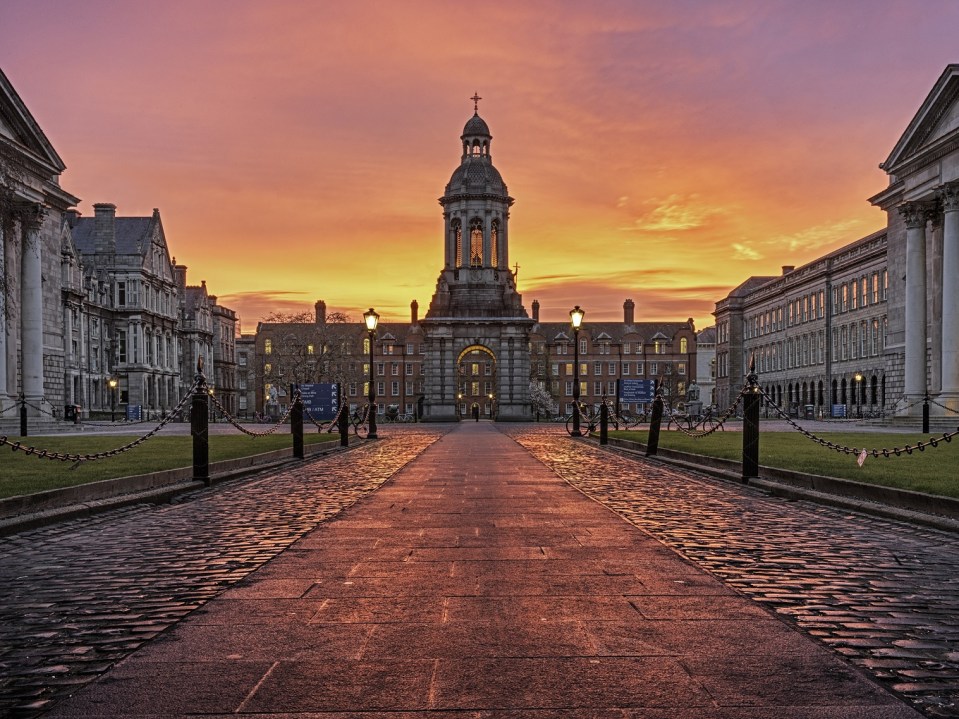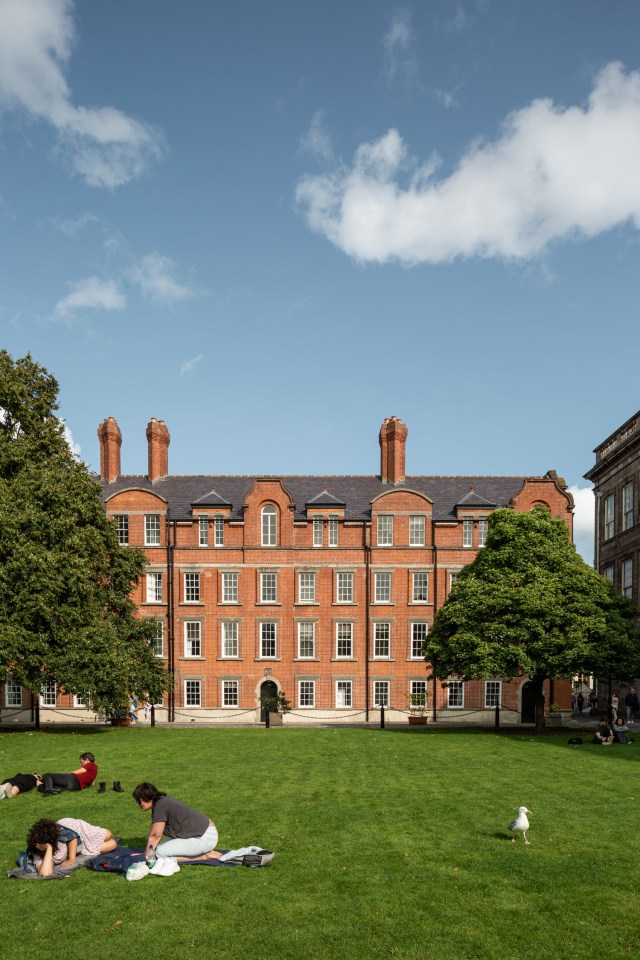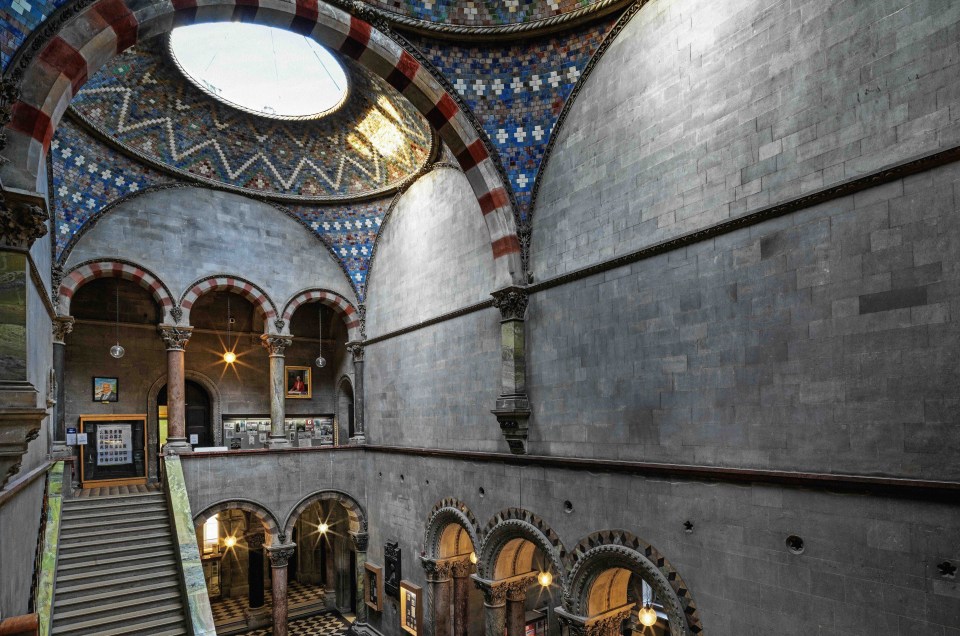Founded in 1592, Trinity College Dublin has witnessed more than four centuries of Ireland’s history. Its cobblestones have been walked by changemakers, writers, scientists and statespeople. Today, its stories and legacy live on in its wonderful teams, architectural buildings, stunning city centre campus and historic traditions.
The Trinity Trails walking tour is the official guided tour of the university, led by expert student and alumni tour guides. The Trinity Trails guides take visitors on an exploration of historical points that have shaped not only the university but also Dublin city and Ireland itself. A 45-minute walking tour with one of their passionate tour guides allows you to hear Trinity’s stories on a loop of the spectacular campus grounds.
Top Stops of Historical Interest
The Campanile – A Symbol of Tradition and Superstition

You will begin your walking tour at the heart of Front Square beside the Campanile or Bell Tower, one of Trinity’s most famous landmarks. Constructed in the 1850s, it replaced an earlier bell tower and quickly became the symbolic centre of academic life. Its neoclassical stonework reflects the grandeur of Georgian Dublin, but its real claim to fame lies in student folklore.
According to the Trinity legend, any student who passes under the tower when the bell tolls will fail their exams Even on the wettest days, you’ll rarely see a student seeking shelter beneath it – proof of how deep the superstition is woven into Trinity life.
The Chapel and Examination Hall – “Heaven and Hell” in Georgian Stone

Your walking tour will take in the Chapel, designed by Sir William Chambers, which was completed in 1798. Originally reserved for Protestant worship, it became Ireland’s first ecumenical chapel in the 1970s, hosting services for all Christian denominations. Today, it is a beautiful venue for alumni weddings, daily prayers, and funeral rites – a living link between history and modernity.
Facing the Chapel is the Examination Hall, its architectural twin. Colloquially nicknamed “hell,” it is infamous for hosting the gruelling Foundation Scholarship Exams, which demand months of intense preparation. Yet the rewards – free tuition, accommodation, and meals for the duration of study years – have drawn generations of students, including Oscar Wilde, Samuel Beckett, and more recently, famous Irish author Sally Rooney.
The Rubrics – The Oldest Survivor

Dating to the early 18th century, the Rubrics is Trinity’s oldest surviving building. Its red-brick façade offers a rare glimpse of what the college looked like before granite and limestone replaced brick in later expansions. Today, it quietly bridges past and present, housing student residences – while symbolising the beauty of Trinity’s earliest architecture.
The Graduate Memorial Building – Societies That Shaped the Nation

Opening its doors in 1902, the Graduate Memorial Building is home to some of Trinity’s student societies. No lectures or classes take place here, and the building is entirely student-run. Notable student societies based there include the Philosophical Society and Historical Society, two of the oldest student societies in the world.
These societies serve as arenas for debate on Ireland’s most pressing political and social questions. Alumni such as Bram Stoker, Mary Robinson, and Oscar Wilde all sharpened their ideas and voices here, influencing both Irish and international thought.
The Museum Building – Ireland Carved in Stone

Constructed in the 1850s, the Museum Building was designed in the Gothic Revival style at a time when Ireland was emerging from the devastation of the Great Famine. Its architects sought to revive the Irish national spirit through art and design.
The building is adorned with carvings of over 100 Irish plant species, each unique. Discs of Connemara green marble and Cork red marble on the façade celebrate Ireland’s natural resources. Inside, fossilised giant deer, extinct for 11,000 years, greet visitors, and visitors are encouraged to look upwards and admire the Byzantine-inspired ceiling.
Other Historic Stops Along the Trail
Don’t miss out on the rest of the key points of the tour, which combine old and modern Irish history.
The Rose Garden
Trinity’s ongoing commitment to biodiversity is evident in the university’s Rose Garden, where beauty and sustainability live side by side. A place of tranquillity and reflection, students and visitors can find peace and quiet here, away from the busy streets of Dublin city.
Samuel Beckett Theatre
A hub of student theatre, the Samuel Beckett Theatre merges history with creativity. Home to one of the world’s most active student theatre companies and the drama department, the theatre holds over 60 productions a year and famous alumni include Game of Thrones and House of Guinness actor Jack Gleeson, Downton Abbey star Allen Leech, and actress Ruth Negga.
Eavan Boland Library
This 20th century library was completed in 1967. Past Trinity students will remember it as the Berkeley Library; however, it was renamed in 2023. After 855 submissions of ideas for a new name, the college board renamed the library after Eavan Boland, a famous Irish poet and a former student of Trinity. It is the first building on the Trinity campus that is named after a woman.
Sfera con Sfera
This bronze globe is positioned between the Museum Building, Eavan Boland Library and the well-known Old Library. The Sfera con Sfera sculpture marks a pivotal point where past, present, and future converge on campus.
